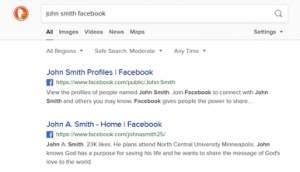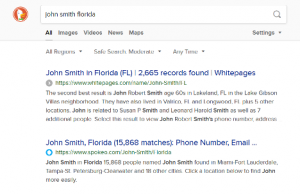Steps to Protect Your Online Data Privacy
By Andrew Dively | September 25, 2020
Some individuals, when asked about why they don’t take more steps to protect their privacy, respond with something along the lines of, “I don’t have anything to hide.”, but if I were to ask those same individuals to send me their usernames and passwords to their email accounts, very few would actually grant me permission. When there is a lot of personal information about us on the internet, it can harm us in ways we never intended. Future employers who scour social media looking for red flags, past connections searching for our physical addresses on Google, or potential litigators looking up our employer and job title on LinkedIn to determine if we’re worth suing. This guide is going to cover the various ways our data and lives are exposed on the web and how we can protect ourselves.
Social media is by far the worst offender when it comes to data privacy, not only because of the companies’ practices but also because of the information people willingly give up, which can be purchased by virtually any third party. I’d encourage you to Google yourself to see what comes up. If you see your page from any networking sites like LinkedIn or Facebook, there are settings to remove these from public search engines. Then, you have to file a query with Google to remove the links once they no longer work. Then, within the same Google page, go to images and see what comes up. These can usually be removed as well. I would recommend removing as much Personally Identifiable Information (PII) as possible from these pages, such as current city, employers, spouses, birth dates, age, gender, pet names, or anything else that could potentially compromise your identity. Then, go through you contacts and remove individuals you don’t know, because I’d recommend that you use the highest security settings on these apps, but they can be circumvented if someone makes a fake account and sends you a friend request. Each of these social media sites has a method under privacy to view your page from the perspective of an outsider, nothing should be visible other than your name and profile picture. Next we will move onto protecting your physical privacy.

If I walked up to most individuals, they wouldn’t give me their physical address either, yet it only takes five seconds to find it on Google. If you scroll down further on the page where you searched your name, you will see other sites like BeenVerified.com, Whitepages.com, and MyLife.com. All it takes for someone to find where you live on these sites is your full name, age range, and the state you live in. These sites aggregate various personal information from public records and other sources and sells them to other companies and individuals who may be interested in them. You will find your current address and the places you’ve lived for the past ten years, all of your relatives and their information, net worth, birth date, age, credit score, criminal history, etc. The good news is that you can wipe your information from most of these sites by searching for the “opt out” form, which they are required to honor by law. If you want to take a further step, you can setup a third party mail service or P.O. Box that has a physical mailing address for less than $10 per month, to avoid having to give your physical address out. Most people aren’t aware that even entities such as the Department of Motor Vehicles sells individuals address information that gets aggregated by these companies. Protecting your physical address and other vital details can go a long way to protect your privacy.

As we wrap this up, the key takeaway from all of this is to try to think about how your data can be compromised and to take steps to protect it before something happens. There are many more potential harms out there beyond just identity theft. Rather than relying on the Government to regulate data privacy in the US, we as individuals can take steps to reclaim our personal privacy and freedom.
